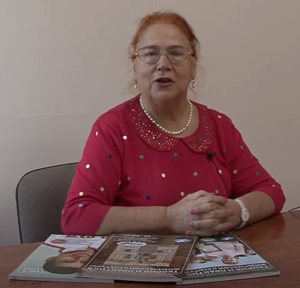Electrical stimulation of C2C12 cell culture as a model of human physical activity
ˑ:
Dr. Med., Associate Professor E.Yu. Dyakova1
Postgraduate student Yun Yuyfen1
Postgraduate student E.A. Yugankina1, 2
A.E. Chernykh1
1National Research Tomsk State University, Tomsk
2Tomsk State Pedagogical College, Tomsk
Objective of the study was to using a physical exercise model, evaluate the effect of electrical stimulation on the glucose transport mechanism of the C2C12 cell culture.
Methods and structure of the study. For the study, the cells were randomly divided into 4 groups: 2 control groups and 2 experimental groups (with insulin resistance). Insulin resistance was formed using a high-glucose medium (25 mM). In each group, half of the cells were exposed to electrical stimulation, the other half remained intact. Half of the cells in each subgroup were treated with insulin to trigger the glucose transport mechanism. The content of the phosphorylated form of the Akt protein (pAkt) in the cells served as a marker for the operation of this mechanism.
Results and conclusions. It was found that in cells with insulin resistance, pAkt was lower compared to the control group. The addition of insulin increased pAkt content, but its level in the experimental group remained reduced. Electrical stimulation increased the concentration of pAkt in all groups, bringing the level of this protein in the experimental groups to values comparable to the control group. Physical activity is one of the methods for treating various diseases and improving both the psychological and functional state of the body. It has been proven that physical activity has a positive effect on the body with insulin resistance. Modeling physical activity on cell cultures using electrical stimulation makes it possible to elucidate the mechanisms of such positive effects.
Keywords: electrical stimulation, exercise model, insulin resistance, cell culture.
References
- Zakharova A.N., Milovanova K.G., Orlova A.A., Kollantay O.V., Shuvalov I.Yu., Kapilevich L.V. Okislitelnoye fosforilirovaniye v tkani burogo zhira u myshey s modelyu sakharnogo diabeta II tipa posle prinuditelnykh begovykh nagruzok [Oxidative phosphorylation in brown fat tissue in mice with a model of type II diabetes mellitus after forced running exercises]. Byulleten sibirskoy meditsiny, publ. 2024. Vol. 23. No. 1. pp. 48-55.
- Colberg S.R., Sigal R.J., Yardley J.E., Riddell M.C., Dunstan D.W., Dempsey P.C., Horton E.S., Castorino K., Tate D.F. Physical Activity. Exercise and Diabetes: A Position Statement of the American Diabetes Association. Diabetes Care. 2016. Nov;39(11):2065-2079.
- Pirkmajer S., Chibalin A.V. Serum starvation: caveat emptor. Am. J. Physiol. Cell Physiol. 2011;301(2):272-279.
- Zakharova A.N., Kironenko T.A., Milovanova K.G., Orlova A.A., Dyakova E.Yu., Kalinnikova Yu.G., Kabachkova A.V., Chibalin A.V., Kapilevich L.V. Treadmill Training Effect on the Myokines Content in Skeletal Muscles of Mice With a Metabolic Disorder Model. Front Physiol. 2021. Nov 10;12:709039.
- Zakharova A.N., Kironenko T.A., Milovanova K.G., Orlova A.A., Dyakova E.Yu., Kalinnikova Yu. G., Chibalin A.V., Kapilevich L.V. Effect of Forced Treadmill Running on Skeletal Muscle Myokine Levels in Mice with a Model of Type II Diabetes Mellitus. Journal of Evolutionary Biochemistry and Physiology. 2021. Vol. 57. No. 4. pp. 904-912.



